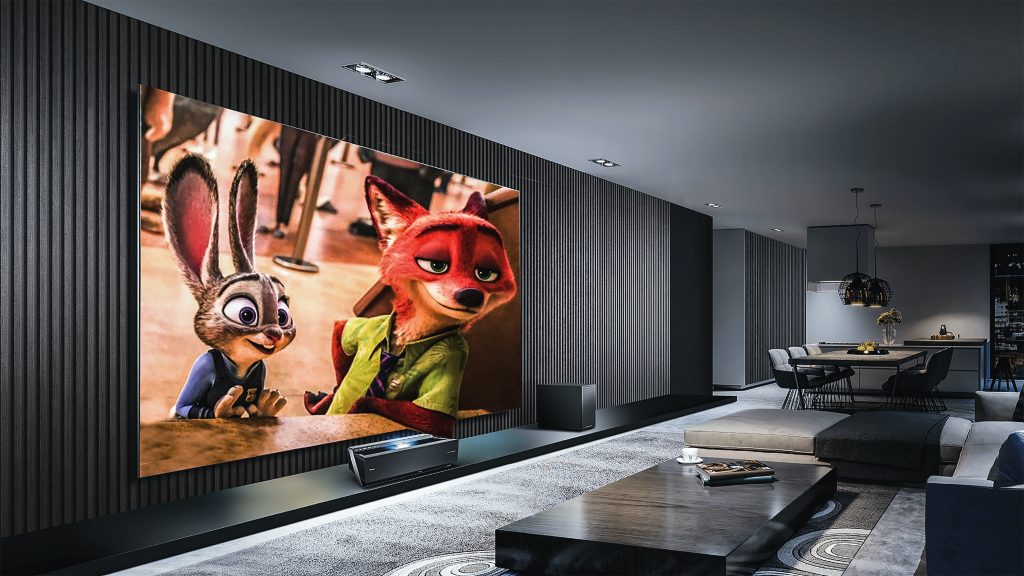
The features of a projector can vary depending on the specific model and brand, but here are some common features that you may find in projectors:
- Resolution: Projectors come in various resolutions, such as XGA (1024×768 pixels), WXGA (1280×800 pixels), Full HD (1920×1080 pixels), or even 4K Ultra HD (3840×2160 pixels). Higher resolution projectors offer sharper and more detailed images.
- Brightness: Projector brightness is measured in lumens. Higher lumen output generally results in a brighter image, which is particularly important if you plan to use the projector in a well-lit room or for larger screen sizes. Projectors can range from a few hundred to several thousand lumens.
- Contrast Ratio: Contrast ratio refers to the difference in brightness between the darkest and brightest parts of an image. A higher contrast ratio produces more vivid and lifelike images with better differentiation between light and dark areas.
- Throw Ratio: The throw ratio indicates the distance between the projector and the screen in relation to the width of the projected image. It determines how large or small the projected image will be for a given distance. Projectors with a shorter throw ratio can project larger images from a shorter distance.
- Connectivity: Most projectors offer a range of connectivity options, including HDMI, VGA, USB, and audio ports. These connections allow you to connect various devices such as laptops, gaming consoles, DVD players, and smartphones to the projector.
- Keystone Correction: Keystone correction is a feature that adjusts the shape of the projected image to compensate for any distortion caused by the angle of the projector. It helps to create a rectangular image even if the projector is placed at an angle.
- Lens Shift: Lens shift allows you to physically adjust the position of the lens without moving the entire projector. This feature is useful for correcting the image position vertically or horizontally, making it easier to align the projected image with the screen.
- 3D Capability: Some projectors are equipped with 3D capabilities, allowing you to enjoy 3D movies, games, or other content when used with compatible 3D glasses and content sources.
- Built-in Speakers: Many projectors have built-in speakers, eliminating the need for external audio devices in small or casual setups. However, for better sound quality, you may still want to connect external speakers or a sound system.
- Portability: Projectors vary in size and weight, with some being more portable than others. If you plan to move or transport the projector frequently, you may want to consider a smaller and lighter model.
These are just a few of the features commonly found in projectors. When choosing a projector, consider your specific needs, such as the intended usage environment, required image quality, and desired connectivity options, to select a model that best fits your requirements.
